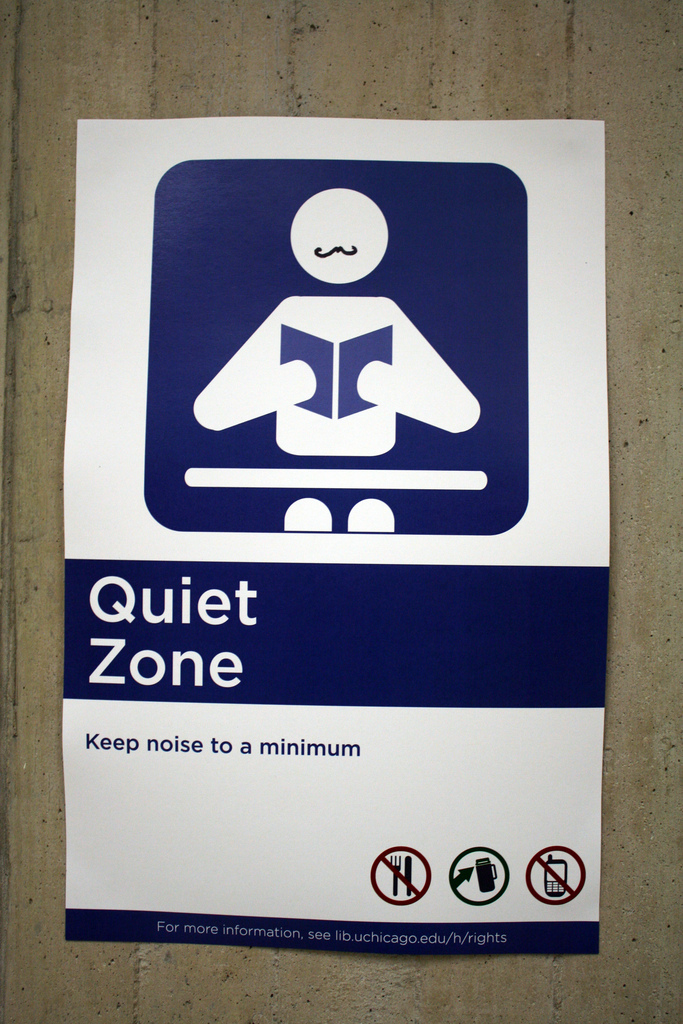I have to admit that my classroom is noisy. My lessons are full of discussion, some of which is even relevant to the task in hand. I sometimes worry, though, that my students do not always get enough opportunity to really think, without interruption or ‘helpful’ guidance from me. But then, I tried out the Silent Discussion and it has proved to be the most thoughtful conversation of all.
The genesis of it began last year, when I attended a training weekend for the International Baccalaureate. It was a brilliant course, full of lots of practical suggestions for helping our IB students to become more independent thinkers. One of these was a ‘Silent Lesson’, in which students were warned beforehand, asked to read a section of the current text, and then in the lesson several large sheets of paper were placed around the room for students to write on. Headings could be provided but we were advised to leave the sheets blank to allow students’ freedom to write whatever ideas the had had about the section of text (I usually did a combination of headings and blank sheets).
 They could then spend as long or as little on each sheet, adding new comments and/or responding to other students’ comments.
They could then spend as long or as little on each sheet, adding new comments and/or responding to other students’ comments.
I have tried this out with both my IB and A Level classes and have been impressed by results. My students genuinely enjoyed the freedom of working in silence, of not having the usual pressure to verbally discuss and respond to the tirade of questions from their teachers. They also developed some fantastically original and insightful responses to the texts, which they wouldn’t have explored, if I had been guiding the learning in the lesson.
This was all fantastic but I felt that my other classes were missing out. So, the next challenge was to try it out lower down the school.
My guinea pigs were my loveable and effervescent year 10 class. Our texts were the Conflict Poems for AQA GCSE Literature; the logistics were worrying. I realised that the complete freedom of time and movement around the classroom would be problematic with a mixed-ability class of 27 students, so I decided to use clear headings and a time limit for each sheet, which would then be passed on to the next student to add to, build on or challenge.
I have to admit that I was nervous about this working but I think the key to it working is all in the preparation. The students have to know beforehand what the next lesson entails and the importance of the silence. I also put a notice on my door, reminding them that it was a silent lesson. The funniest part of the whole escapade was hearing my year 10s shuffling around outside my class on the day, saying ‘You go in first. I don’t want to go in yet because I don’t want to be silent.’ This doesn’t demonstrate their glee at the lesson to come but it shows that they understood the rule and they were prepared to stick to it.
And the results? Amazing. They honestly exceeded anything that I could have hoped for- the sheer quantity that my students wrote was something to be proud of, but the quality was also brilliant. They had really thought about their responses and reacted to the responses of their class-mates, developing their ideas and adding to them.
Every student rose to the challenge and thought for themselves. It was one of the best lessons I have ever taught. And that is because I didn’t teach and I didn’t talk. All the ‘talking’ was done by the students. One student wrote in the plenary ‘I learned that I can stay quiet for a whole hour’. And in these noisy, modern times that is an achievement in itself.
Naomi Hursthouse
Have you ever tried a silent lesson before? Let us know how you got on @FreedomToTeach, or join the conversation on Facebook



